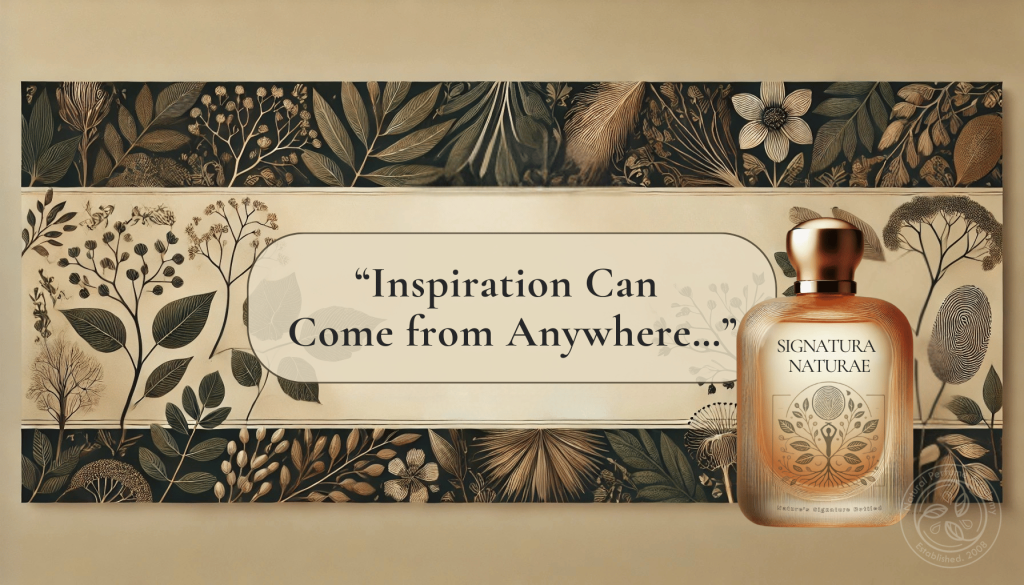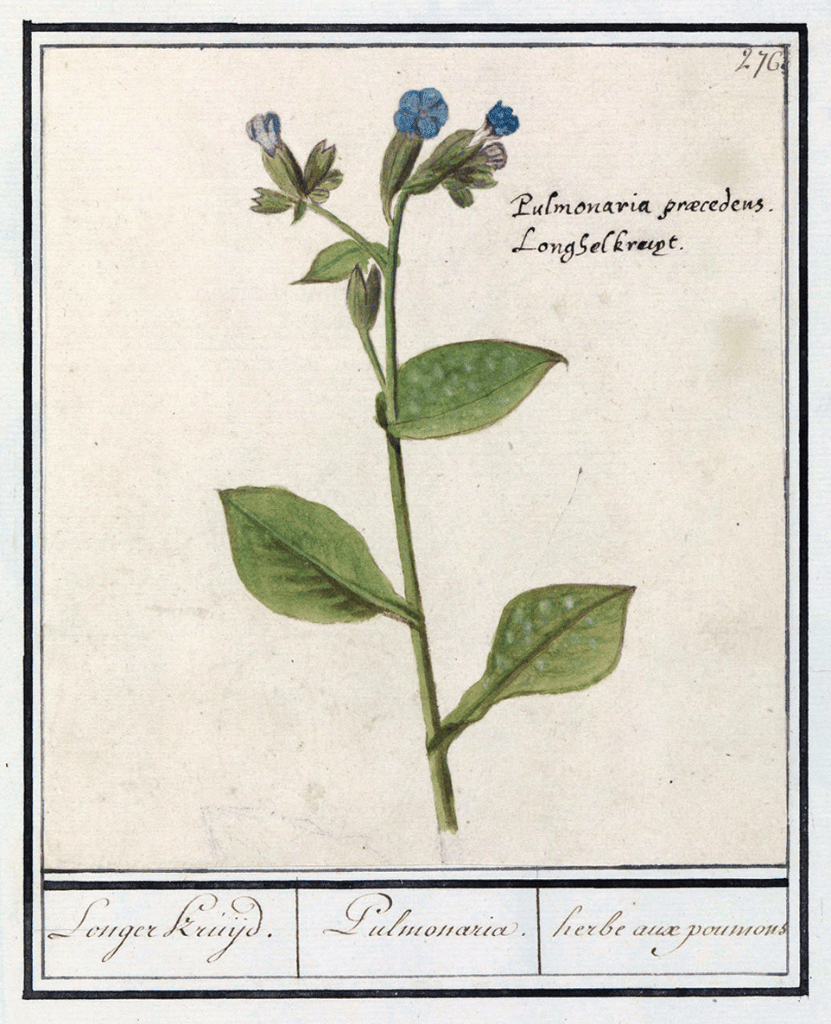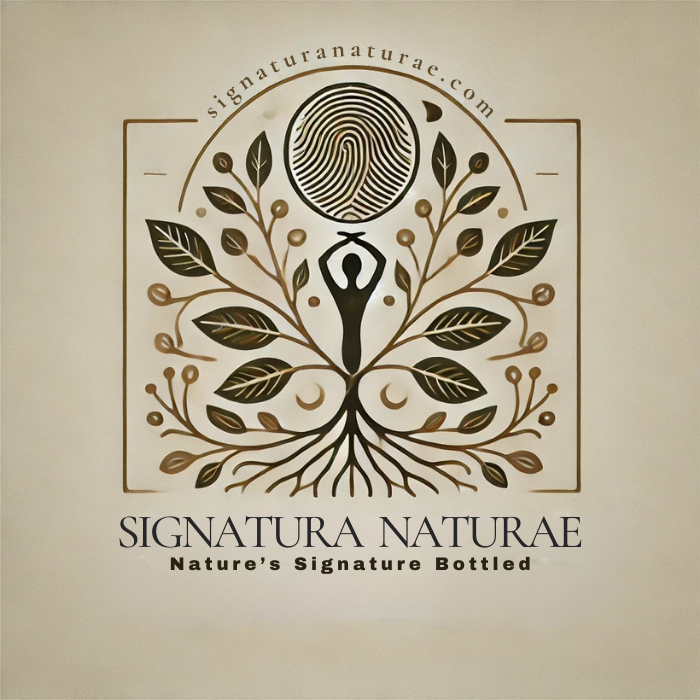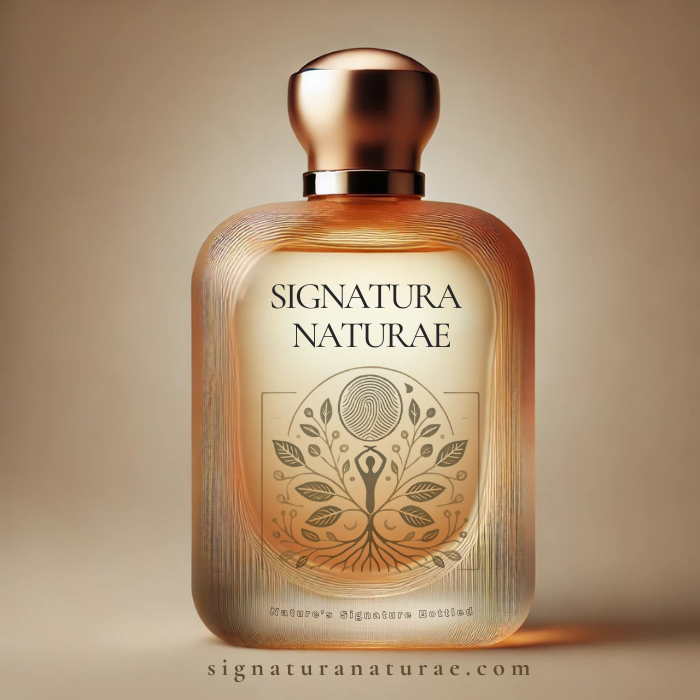
The Doctrine of Signatures and Its Inspiration for Natural Perfumery
The Doctrine of Signatures is a fascinating concept rooted in herbal medicine and traditional healing practices. This blog was inspired by a simple yet profound observation about borage, an herb with a striking black center, historically associated with easing depression. The Doctrine of Signatures suggests that the physical characteristics of a plant—its shape, colour, texture, or smell—indicate its potential therapeutic uses. This idea, steeped in history, was widely popularised during the Renaissance, particularly through the works of notable figures like Paracelsus and Jakob Böhme.
Origins and Core Ideas
The doctrine posits that plants and their features mirror parts of the human body, ailments, or functions they can heal. These “signatures” were believed to be clues placed by the Creator, guiding humans to understand the healing potential of nature.
Examples of the Doctrine in Practice
Here are some classic examples of how the doctrine was applied:
Walnuts: Their lobed structure resembles the human brain, leading to the belief they aid brain health.
Liverwort: With liver-shaped leaves, this plant was historically used to treat liver ailments.
Bloodroot: Its red sap was associated with blood and used for blood-related conditions.
Eyebright (Euphrasia): The flower’s resemblance to an eye made it a traditional remedy for eye infections and inflammation.
Lungwort (Pulmonaria) (pictured): The speckled appearance of its leaves, resembling lungs, inspired its use for respiratory issues.

Historical Context
Paracelsus (16th Century): A renowned herbalist and alchemist who believed God created plants with specific marks to signify their medicinal uses.
Jakob Böhme (1575–1624): A German mystic and philosopher who expanded on the doctrine, seeing it as a divine system of correspondence between nature and humanity.
Decline and Modern Perspective
By the 18th and 19th centuries, the rise of scientific medicine and lack of empirical evidence caused the doctrine to fall out of favour. Today, it is often regarded as pseudoscience. However, it continues to inspire holistic and alternative medicine practitioners, not as a scientific principle, but as a symbolic and intuitive guide. The visual and intuitive connections it fostered often encouraged exploration of plants, indirectly leading to valuable discoveries.
Inspiration for Perfumers
The Doctrine of Signatures can be a starting point to spark creativity and connect with the deeper meanings of ingredients. It’s a reminder that inspiration can come from anywhere, whether it’s the shape of a walnut, the brightness of a lemon, or the grounded aroma of patchouli. This approach doesn’t replace the science of perfumery but adds a layer of depth and storytelling that can inspire perfumers to pick up their droppers and start blending.
Applying the Doctrine of Signatures to Natural Perfumery
While rooted in tradition rather than science, the Doctrine of Signatures offers a treasure trove of inspiration for natural perfumery. It provides a framework for storytelling, emotional connection, and creative exploration. Here’s how it might be applied:
1. Drawing Symbolism from Ingredients
Consider the physical traits of ingredients and their emotional or symbolic resonance in a fragrance:
Lavender: Its soothing, soft purple hue and calming aroma symbolise peace and relaxation.
Citrus Oils (Lemon, Grapefruit): Bright, zesty notes reflect their sunny colour and evoke energy and vitality.
Patchouli: With its earthy, grounded scent, it suggests stability and a deep connection to the earth.
2. Thematic Storytelling in Perfume Design
Use the doctrine as a guide to create symbolic perfumes that match emotional or psychological themes:
A perfume for confidence might blend rosemary (clarity) and clove (strength).
A blend for love and passion could feature rose (heart connection) and sandalwood (warmth and grounding).
3. Designing for Specific “Ailments”
While not claiming therapeutic effects, perfumes can align with emotional needs:
For sadness, use uplifting florals or citrus notes to mimic a ray of sunshine.
For focus, include sharp, green, or herbaceous notes like basil or thyme.
4. Creative Marketing and Education
Share the “signatures” of ingredients as part of your storytelling. Customers might love knowing that a perfume’s ingredients were chosen not just for their scent, but also for their symbolic resonance or emotional alignment.
5. Personalised Perfume Consultations
Invite clients to share their emotional or spiritual goals for a fragrance. Use the doctrine as a playful or intuitive guide to select ingredients that match their needs. For example:
A “Healing Heart” blend could include rose (heart) and frankincense (spiritual renewal).
A “Creative Spark” perfume might feature neroli (inspiration) and citrus zest (energy).
Signatura Naturae: A Mock Brand for Inspiration
For demonstration purposes, let’s imagine a mock brand inspired by the Doctrine of Signatures: Signatura Naturae. This fictitious brand exemplifies how the principles of the doctrine could inspire a natural botanical perfumery.
Tagline: “Nature’s Signature, Bottled.”
Mission: To craft perfumes that connect the symbolic language of plants with human emotion, blending art and nature in every drop.
Concept: Each fragrance tells a story rooted in the doctrine, pairing botanical “signatures” with their symbolic meanings to create an evocative experience.

Developing Signatura Naturae: Fonts, Colours, and Style
Inspired by branding principles like those in the Kapferer’s Brand Identity Prism, the Signatura Naturae mock brand can be developed with a thoughtful and cohesive visual identity:
1. Fonts:
Primary Font: A refined serif font like Garamond or Didot for the brand name to convey elegance and sophistication.
Secondary Font: A clean sans-serif font like Lato or Open Sans for taglines and supporting text to maintain modernity and readability.
2. Colors:
Earthy Gold: To represent the “aurum” (gold) element, adding a sense of luxury and warmth.
Warm Amber Brown: Connecting to nature, growth, and the botanical theme.
Soft Cream or Beige: For a clean, timeless backdrop that balances the richer tones.
3. Logo Mark:
A stylised fingerprint or tree rings, subtly integrated with a leaf or tree silhouette, symbolising nature’s mark and connection to humanity.
A crescent moon or other celestial elements to evoke mysticism and nature’s cycles.
4. Imagery and Texture:
Use natural textures like parchment, watercolour washes, or botanical illustrations for packaging and digital assets.
A Call to Action
Signatura Naturae serves as a creative demonstration of how ancient ideas like the Doctrine of Signatures can inspire modern artistry in perfumery. Perfumers are encouraged to look beyond the traditional and find stories in nature’s forms, colours, and patterns.
Let this mock brand ignite your imagination and inspire you to craft fragrances that tell meaningful, resonant stories—from nature’s signature to your bottle.
Discover the perfect way to channel your creativity and passion for natural perfumery with our CPD Certified NPA Diploma Course.

P.S. If this blog resonates with you, you might be interested to know that the domain name SignaturaNaturae.com is available for purchase. Proceeds will support the work we do at NPA to keep the light of creativity burning bright. 🌿✨